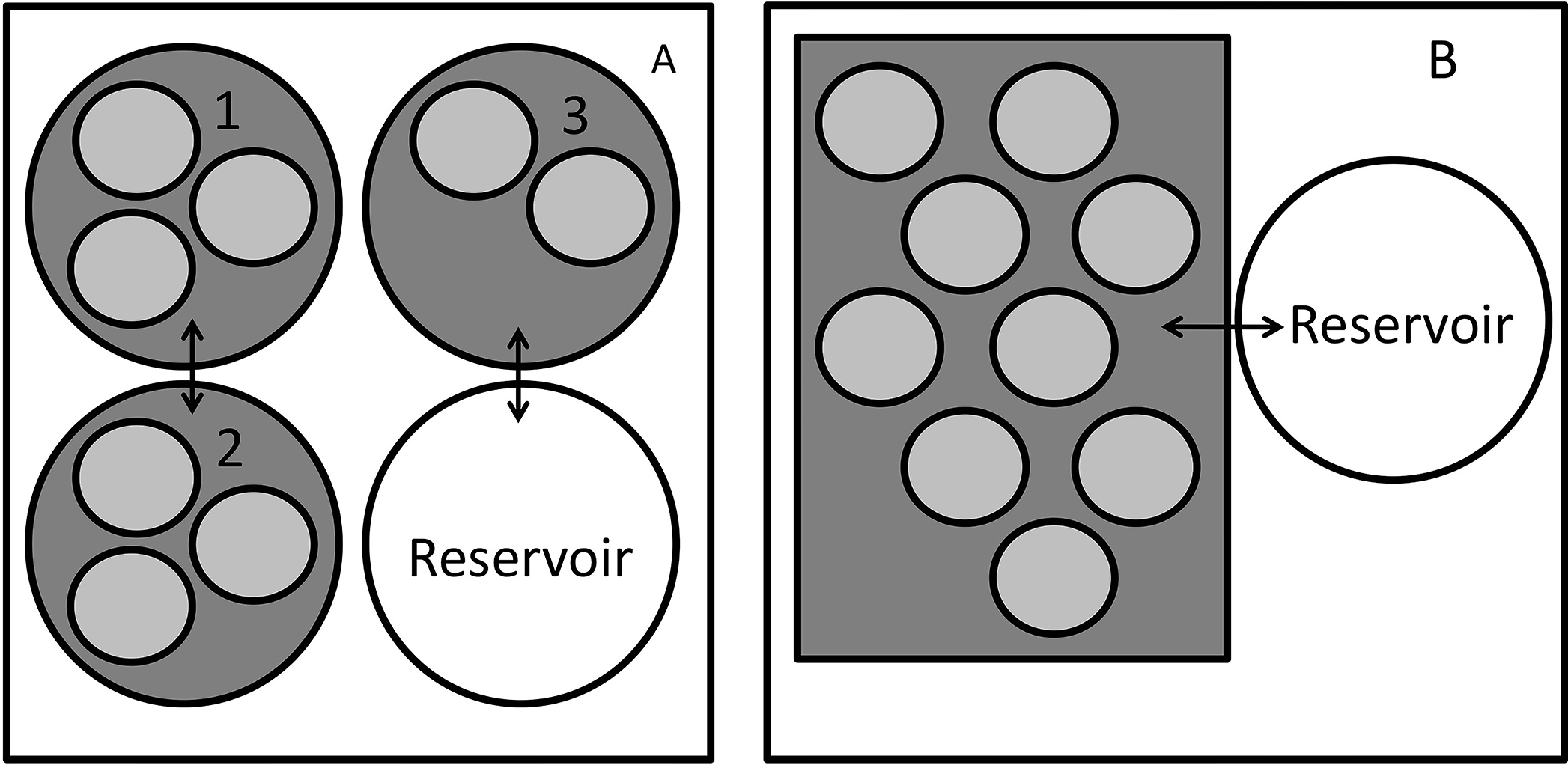Figure 1.

Locomotor activity of a juvenile horseshoe crab expressing a daily pattern of activity during LD, and a circadian pattern in DD. Image on the left is a double-plotted actogram; activity is indicated by black tick marks. The imposed light:dark cycle (LD) is indicated at the top of the image. During the first ten days, horseshoe crabs were exposed to a 14:10 LD cycle, and during the second ten days they were in constant darkness (DD). Images on the right are Lomb-Scargle periodograms for the same animal during either the LD period (top) or the DD period (bottom). Vertical scale is the relative strength of rhythmicity (Q(p)); the horizontal axis shows the length of periods in hours (10 – 30); the largest peak above the horizontal line of significance (P < 0.001) is indicated by a numerical value.
